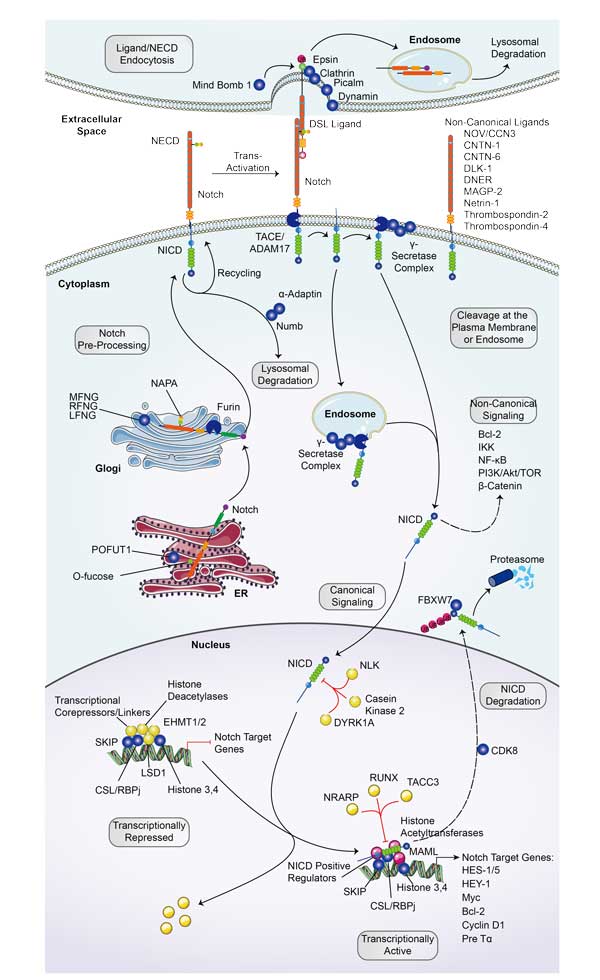AP2A1
-
Official Full Name
adaptor-related protein complex 2, alpha 1 subunit -
Overview
This gene encodes the alpha 1 adaptin subunit of the adaptor protein 2 (AP-2) complex found in clathrin coated vesicles. The AP-2 complex is a heterotetramer consisting of two large adaptins (alpha or beta), a medium adaptin (mu), and a small adaptin (sigma). The complex is part of the protein coat on the cytoplasmic face of coated vesicles which links clathrin to receptors in vesicles. Alternative splicing of this gene results in two transcript variants encoding two different isoforms. A third transcript variant has been described, but its full length nature has not been determined -
Synonyms
AP2A1;adaptor-related protein complex 2, alpha 1 subunit;AP-2 complex subunit alpha-1
Recombinant Proteins
- Mouse
- Human
- Rhesus macaque
- Mammalian Cells
- E.coli
- E.Coli/Yeast
- Wheat Germ
- HEK293
- His
- GST
- Avi
- Fc
| Cat.# | Product name | Source (Host) | Species | Tag | Protein Length | Price |
|---|---|---|---|---|---|---|
| AP2A1-1738M | Recombinant Mouse AP2A1 Protein | Mammalian Cells | Mouse | His |
|
|
| AP2A1-27357TH | Recombinant Human AP2A1, His-tagged | E.coli | Human | His | 734-950 a.a. |
|
| AP2A1-347R | Recombinant Rhesus monkey AP2A1 Protein, His-tagged | Mammalian Cells | Rhesus macaque | His |
|
|
| Ap2a1-3530M | Recombinant Mouse Ap2a1, His-tagged | E.Coli/Yeast | Mouse | His | 955 |
|
| AP2A1-651H | Recombinant Human AP2A1 protein, GST-tagged | Wheat Germ | Human | GST |
|
|
| AP2A1-175R | Recombinant Rhesus Macaque AP2A1 Protein, His (Fc)-Avi-tagged | HEK293 | Rhesus macaque | Avi&Fc&His |
|
|
| AP2A1-175R-B | Recombinant Rhesus Macaque AP2A1 Protein Pre-coupled Magnetic Beads | HEK293 | Rhesus macaque |
|
||
| AP2A1-185H | Recombinant Human AP2A1 Protein, His-tagged | E.coli | Human | His | Pro2-Pro253 |
|
| AP2A1-600M | Recombinant Mouse AP2A1 Protein, His (Fc)-Avi-tagged | HEK293 | Mouse | Avi&Fc&His |
|
|
| AP2A1-600M-B | Recombinant Mouse AP2A1 Protein Pre-coupled Magnetic Beads | HEK293 | Mouse |
|
Involved Pathway
AP2A1 involved in several pathways and played different roles in them. We selected most pathways AP2A1 participated on our site, such as Adaptive Immune System,Arf1 pathway,Axon guidance, which may be useful for your reference. Also, other proteins which involved in the same pathway with AP2A1 were listed below. Creative BioMart supplied nearly all the proteins listed, you can search them on our site.
| Pathway Name | Pathway Related Protein |
|---|---|
| Disease | COBRA1,CPSF6,VPS37A,OPN1MW,OPN1SW,HDAC5,LTF,GYG1,PRELP,AP1B1 |
| Beta-catenin independent WNT signaling | CLTB,PRICKLE1,AP2A2,RYK,DVL2,AGO3,ROR1,ROR2,AGO1,AP2S1 |
| Axon guidance | RHOB,FES,DPYSL5B,EPHA4,EPHA6,LAMTOR2,ANK2B,PLXNA3,DLG4,KRAS |
| EGFR downregulation | STAM2,AP2B1,SPRY1,AP2A2,PTPRK,SPRY2,AP2M1,AP2S1 |
| Developmental Biology | EFNA3B,CFL1,PEA15A,NRG4,ACTR2,EFNA1,SEMA4D,RANBP9,FRS2B,SCN3B |
| Adaptive Immune System | ATG7,CTSB,LILRB5,CD300C,NA,CD160,ASB8,Siglece,GAN,KIR2DS2 |
| EGFR1 Signaling Pathway | EPS8,ERRFI1,EEF1A1,RBB4L,MAP3K2,RALBA,PTK6,PITPNAA,TNK2,SPRY2 |
| Arf1 pathway | USO1,ARF1,ARFIP2,CLTB,CLTA,AP2M1 |
Protein Function
AP2A1 has several biochemical functions, for example, contributes_to clathrin adaptor activity,protein C-terminus binding,protein binding. Some of the functions are cooperated with other proteins, some of the functions could acted by AP2A1 itself. We selected most functions AP2A1 had, and list some proteins which have the same functions with AP2A1. You can find most of the proteins on our site.
| Function | Related Protein |
|---|---|
| protein complex binding | ABI2,WRN,C8B,CALY,SLC9A3R1,ING2,RAP1A,PFKP,CRTAP,KHDRBS1 |
| protein C-terminus binding | DST,MED12,PEX26,SLC4A1,EFHC1,PHB,HAND2,FIGN,ECM1,TOP2A |
| contributes_to clathrin adaptor activity | AP2A2,AP2B1,AP2M1,AP2S1 |
| protein kinase binding | CAMK2N1A,ELP2,ACSL3,KCNH1,CCNL1,CACNB3,CNPPD1,PRKCZ,KIF14,THY1 |
| protein binding | ATF1,ATP2B4,SEC63,KRAS,MYO7B,PARK7,PPARGC1A,GLDN,FCNA,SIRT7 |
| protein transporter activity | VPS26BL,PPIAL4A,EIF4ENIF1,RUFY1,VPS26B,AP3S1,RANGRF,KPNA1,SNUPN,AP1B1 |
Interacting Protein
AP2A1 has direct interactions with proteins and molecules. Those interactions were detected by several methods such as yeast two hybrid, co-IP, pull-down and so on. We selected proteins and molecules interacted with AP2A1 here. Most of them are supplied by our site. Hope this information will be useful for your research of AP2A1.
HIP1;EGFR;SHC1;FCHO2;ATG9A;MYC;RNPS1;Edc4
AP2A1 Related Signal Pathway
Resources
Related Services
Related Products
References
- Stratta, P; Merlotti, G; et al. Calcium-sensing-related gene mutations in hypercalcaemic hypocalciuric patients as differential diagnosis from primary hyperparathyroidism: detection of two novel inactivating mutations in an Italian population. NEPHROLOGY DIALYSIS TRANSPLANTATION 29:1902-1909(2014).
- Upadhyay, RD; Kumar, AV; et al. Estrogen Effects on Actin Cytoskeletal and Endocytic Proteins Associated With Tubulobulbar Complex Disruption in Rat Testes. REPRODUCTIVE SCIENCES 20:1162-1174(2013).




